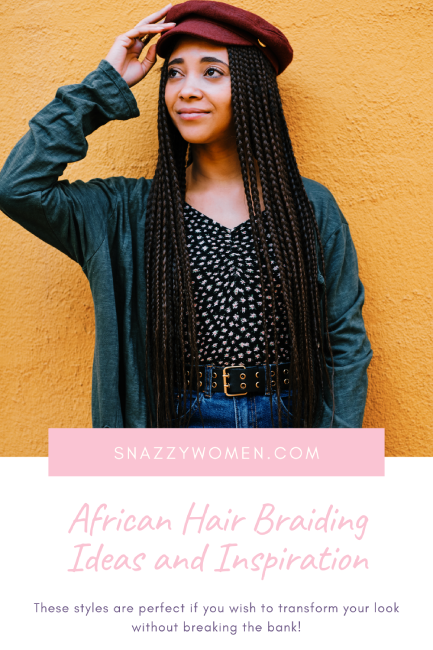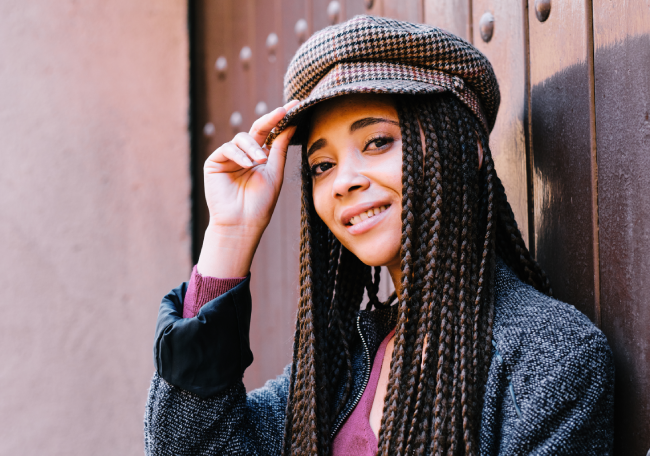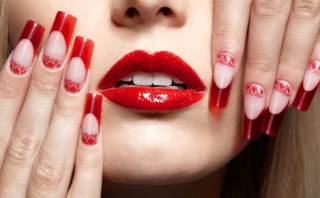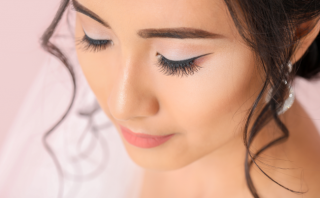Every day, new trends emerge in the ever-changing world of fashion. The numerous hairdo fads that have come and gone throughout history make it tough to keep up. But one thing is certain: braids maintain a mainstay hairstyle for what feels like ages. No, but in all seriousness, African hair braiding has been around since 3500 BC. They have a very long history. It’s safe to assume that preserving fashion is a historical legacy that will continue through the ages.
African braided hair is an iconic style that serves as a marker of social position, ethnicity and religion. African hair braids cover many styles. From traditional cornrows and three-strand braids to Dutch braids.
You may give your hair a break with African hair braiding. It is a simple and stylish way to put off hair styling for several months. Due to their natural, strong hair, which holds braids in an effective manner, most women wear braids. Giving the practice of braiding is of the utmost importance.
Hair braiding is both a ritual and a social service that the person who does it performs. The family’s senior female member teaches her daughters and close friends this style of art. An adept braider is someone who does it well. Braiding is a social responsibility for both men and women. It’s like social service; they don’t gain anything from it.
Braids have changed throughout time. All thanks to the Instagram era, YouTube tutorials, runways, and well-known music festivals. In today’s article, we will see the best braiding styles and techniques for you to try.
What is African Hair Braiding?
African hair braiding has a rich and extensive cultural importance as well as a long history among tribes. There are several tribes in the vast continent of Africa. These tribes have diverse cultures. They recognize each tribe’s culture because of their distinctive haircuts. With the help of their braids, they can learn a person’s community, age, marital status, income, authority, and religion. Braiding customs varies according to the tribe. Creating elaborate patterns for major occasions like weddings, social ceremonies, or war preparations. With the use of a braid pattern or style, a tribe member can recognize someone who belongs to that tribe.
Another function of braids was to create a covert messaging system. With the help of braids, slaves could converse with one another while their owners were not looking.
Braids also served as a road map to liberation for some. For instance, the number of plaits could provide information about the distances someone must cover. Even, the location of a meeting point to escape bond. By making an effort, African American women preserve their ancestors’ stories. The custom of donning braids symbolizes the extreme challenges they underwent.
The basic method for creating African braids is to divide the hair into multiple portions. Then twist the natural hair strands with synthetic or artificial hair using several types of hair for various African hair braiding.
Professionals that specialize in hair braiding also perform the braiding. The procedure can last for up to 2-3 months and should take 4-8 hours.
For many women in America, getting braids represents a significant life milestone.
The contrast between tradition and creativity coexists in perfect balance.
Why is African Hair Braiding Trending?
African braided hairstyles are becoming very popular among modern women. Classic designs of African hair braiding complement current streetwear and 90s revival fashion.
African braids are also becoming popular because of the modern music scene. Beyoncé, Rihanna, and Alicia Keys are a few examples, and they all wear them in a flawless manner.
The trend of wearing box braids and twists that are at least waist length has continued throughout the summer. It’s preferable to begin any African hair braiding style with roughly blown-out hair. It makes twisting the braids a lot smoother without exerting too much effort.
A long-standing custom is braiding, in societies with a strong African influence. In addition, reviving time-honoured fashion often and giving a new-school edge to African hair braiding. It shouldn’t be surprising that people with natural Afro-textured hair are embracing a fundamental aspect of the culture. Braids are also adjustable and have a variety of techniques and traditions to look back on.
The alternatives are never-ending, which might be a little overwhelming if you’re trying to choose a look. It can be pearls, technicolour amber hues, or braid styles combined with thread, cuffs and butterflies.
Your major advantage and a special bonus: natural perm and thick hair.
Braids are a quick and enjoyable way to stop styling your hair for months. Give it a rest, and shield it from the damaging environmental elements. Hairstyles with braids allow for imagination.
To make each head distinctive, there are numerous intriguing braiding ways. In addition, you can play around with highlights, smooth or curly textures, clips, patterns and forms.
4 Things to Know Before Getting African Hair Braiding
Before making the decision to get box braids, you must educate yourself on all the important information.
- Wash and dry your hair: Make sure to give your hair a thorough cleaning and remove any possible residue from your scalp. Without a head full of extensions, this is quite simple to accomplish. To remove grease and grime from your hair, use a clarifying shampoo. After that, condition your hair to restore moisture. Other elements that your hair may need, such as protein and moisture, must be present in your conditioner.
- Conditioning as deep as you can: Before you braid your hair, this is your final opportunity to give it more moisture and strength. Use this stage to add any additional products that might help your hair. Because this will be the final conditioner that will also stay in your hair the longest. You don’t have to deep condition your hair overnight, but you should leave the conditioner on for at least 20 minutes.
- Detangling in a thorough manner: Detangle your hair as much as you can. Your hairdresser will use a fine-toothed comb that will break natural hair if you haven’t detangled your hair as instructed. By detangling your hair yourself, you may avoid the discomfort, the extra time, and the potential breakage. In addition, it will be simpler to untangle hair again during the removal of the braids.
- Stretch out your hair: Put your hair in a style that will stretch it out until you braid it after finishing all your treatments. This will reduce the possibility of stray hair strands tangling while you wear the style. Also, it will make it simpler to comb your hair after the removal of extensions. Try a no-heat straightening technique like plaits, bands, or wrapping, as heat will weaken your strands.
The Do’s and Don’ts of African Hair Braiding
Natural hair is often styled in braids to prevent damage from chemicals, heat, humidity, and cold air. But here are a few things you should take care of:
- Do maintain your braids’ natural hair: You should apply moisturizing oils to your scalp three times per week to maintain the health of your braid. Also, cleanse your scalp after physical activities like swimming to remove debris and product buildup. As a final step, you can nourish the hair by spraying them with braid refresher spray.
- Do wrap your hair in a satin hat and scarf at night: The easiest technique to protect your braids at night is to lay down flyaways. While you get some beauty sleep, cover the bottom of your braids with a satin scarf of high quality.
- Do rub your sensitive scalp: Avoid damaging your braids and letting your head bleed by scratching your itchy scalp. You can avoid irritation by soaking the braids in apple cider vinegar before putting the braids in place.
- Don’t keep tight braids: Tight braids can cause a lot of tension, which is harmful to your scalp and hair’s health. In addition to being uncomfortable to sleep in, tight braids can also leave tiny bumps around your hairline. Make sure while getting your braids that they are without too much tension to protect your hair’s health. Or else it will result in breakage.
- Don’t wear your braids for too long: Make sure to remove the previous braids. Give your scalp rest for two to three days. Then get new braids if you want to wear them for more than two months. Anything longer than two months may result in the buildup of too much product and grime, tangling your natural hair.
3 Best African Hair Braiding Ideas For Girls
Check out the cutest inspiration for girls’ African braided hairstyles right now.
- Box Braids
View this post on Instagram
One of the most recognizable hairstyles for Afro-textured hair is the traditional box braid. Splitting your hair to get this look, and then split it into squares and put them into separate plaits. You can use your own hair or have extensions braided in to create long, luscious locks that will turn heads.
- Lemonade Braids
View this post on Instagram
Beyoncé revived the lemonade braids by sporting them on the cover of her very successful album Lemonade. The setting of cornrows is neat, close, and even. They move from left to right instead of straight back. Lemonade braids are a flexible style since they come in many sizes. Combining them with other cornrow patterns like zigzag, and accessorizing them with beads and rings is also quite trendy.
- Micro Braids
View this post on Instagram
They are as small and delicate as their name suggests. Breaking microbraids is easier than larger plaits, despite the fact that they don’t press against the scalp. The reason is that they are snug and close-braided around the head. Using these braids is not for those with dry or brittle hair. But when kept up, these braids produce a cute and cool look with a lot of attitude.
Top 3 Unique African Hair Braiding Ideas For Women
For those who like to go all out with their hair, there are some unique colour suggestions. Don’t forget to experiment!
- Ghana Braids
View this post on Instagram
A flexible and complex hairstyle is Ghana braids. Despite the fact that the name “Ghana braids” can refer to a wide range of various braiding styles. Each one begins with tiny braids that taper back and get wider and fuller. Although starting at the top of your head and braiding side-to-side are other options. Wearing them front-to-back braided is the traditional way.
- Pop Smoke Braids
View this post on Instagram
Pop Smoke braids, named after the late rapper of the same name, are a protective style for natural hair. Both men and women can wear it and it comes in a variety of lengths. The conventional method involves a center parting with four feed-in braids on either side of the head. However, you also have the option to express your creativity by using hair ornaments like beads and different colours. This enables you to modify the appearance to match your personality.
- Updo Braids in a Bun
View this post on Instagram
Updo braids are appealing because they give off a more refined appearance. They can feel quite feminine and are ideal for formal situations. In addition, they can be simpler to style and a fantastic method to keep your braids off your neck. This makes them a cooler option, especially during the warmer months. Also, they showcase your best features, updos can draw attention to your face and neck.
3 Most Popular African Hair Braiding Ideas For Working Women
African braids are among the most well-liked hairstyles for women. But you need to have a comfortable hairstyle for your workplace. Scroll down to check out some of these ideas.
- Bob Braids
View this post on Instagram
One of the most classic haircuts, the bob complements a variety of hair textures and kinds. It is attractive and versatile. This modern take on the traditional style is ideal for people with Afro-textured hair. They want a protective style that is simple to maintain and will make them look younger. The braided bob gives your appearance more edge, so wear it with confidence.
- Knotless braids
View this post on Instagram
They are very adaptable and create a chic yet laid-back vibe. These braids are a protective style that keeps moisture in and promotes the growth of your own hair. These attractive, feminine braids will stay for four to six weeks. You should be careful not to leave them in for too long because doing so could harm your natural hair.
- Twisted braids
View this post on Instagram
Although there are many different types of twist braids, rope twists or Senegalese twists are the most popular. Their appearance, which uses thick strands resembling a rope, gave them their name. We put them by encircling your natural hair with hair extensions before twisting it. Twists’ ability to last up to four months makes them one of the most durable braids.
FAQs
What Is African Hair Braiding Called?
Cornrows are another name for African hair braiding. It is a protective hairstyle for women. Cornrows can help you regain your curls and keep you cool throughout the hottest months of the year.
Due to how closely braiding of cornrows is to the scalp, they are known as SCALP braids. Without a hairstylist’s assistance, cornrowing your hair is challenging. You should schedule a consultation with your hairstylist. Cornrow braids are simple to maintain and last for at least a month. You might need to add extensions to your natural hair in order to produce some cornrows braided hairstyles.
The cornrows hairstyle served as a telltale sign of warriors and kings. It is still widely used in Sudan, the Horn of Africa, and West Africa.
Why Do Africans Braid Their Hair?
One of the finest ways to shield hair from general damage and daily wear and tear is to opt for braids. In addition to being a fantastic protective style, braids provide your hair with time to rest.
Some people may decide to oil and braid their hair with the understanding that doing so will give their hair time to rest and recover. In addition to offering protection, braids are practical.
Without having to worry about the wear and tear of detangling, drying, and/or styling, you can damp wash your hair while it is still braided and blot it dry.
Some people honour their heritage and ancestry by sporting braids. It’s a lovely way to honour someone.
Braids are a very old tradition followed by people of all ages in several African tribes. Braids can save you time if you lead a busy life, have a family, or have other responsibilities.
Do African Braids Damage Your Hair?
However amazing a protective style like African hair braids can be, they also harm your hair. For instance, wearing braids in your hair for several months at a time can make your hair dry, brittle, and prone to breaking.
However, braiding instantly improves your appearance and adds fun to your hair. Your hair suffers if you don’t take adequate care of it and use a safer braiding technique.
African, Native American, and Indian cultures all use hair braiding to preserve length and protect the hair strands. After the braiding of hair, the moisture in the strands is not allowed to leave, allowing the natural hair to grow.
It’s crucial not to immediately braid hair in order to avoid damaging it. You might also attempt to twist it.
How Much Does African Box Braids Cost?
African box braid’s price is among the most crucial factors to know while trying to get the perfect design.
Box braids can range in price from $75 to $450, depending on your needs and the complexity of your braiding. It is obvious that you are investing in both your personal well-being and the condition of your hair. The majority of hairdressers advise against using braids over a long period of time. The tension they put on your scalp can cause traction alopecia, which results in hair loss. Learn how to style box braids to choose the appropriate hair type for your needs and preferences. Find stylists in your region, and discuss your options with them.
How Long Does African Braids Last?
It is up to you how long you wear your braids in. Nevertheless, it requires both expertise and patience to achieve this look. That is why it’s crucial to maintain the style once you’ve got your braids looking immaculate.
You don’t need to wash or brush these braids every day because they are a practical and simple style to maintain. But if you want to make them durable, there are some actions you should think about taking.
African box braids have a four-to six-week lifespan. The most amount of time we would advise leaving them in your hair is six weeks. The absolute maximum is two months. I advise keeping your box braids in place.
In Conclusion
Consider African hair braiding when planning your fall hairstyles. It’s a smooth transition from summer to fall fashion that provides choices for different hair lengths and textures. Completing some of the styles at home; they don’t even call for a trip to the braiding shop. Remember that maintaining your natural hair before and after getting braids and twists is essential.
Creating African hair braids with as little as a few inches of hair is possible. Feed-in styles are preferable for shorter hair since they offer a guarantee to secure your natural hair with extension hair. We recommend getting the traditional knotted base from an African hair braider with skills, as it is difficult to DIY. Anything that allows for loose ends, like braids in an updo that lets loose into curls, will also suit short hair well.
The braiding of African hair is adaptable. You can experiment with fishtail braids, microbraids, cornrows, blocky braids, hair bands, twist braids, tree braids, etc.
According to researchers, braids were “on-trend” as early as 2000 B.C.
Famous designers from across the world experiment with braids at fashion shows every year. Pictures of braids receive more likes than those of any other hairdo on Instagram.
What do you think of African hair braiding? Which styles are you eager to try? Let us know in the comments section below!





